How the Directors of HBO's 'Tiger' Found a Side Of the Golfer We've Never Seen
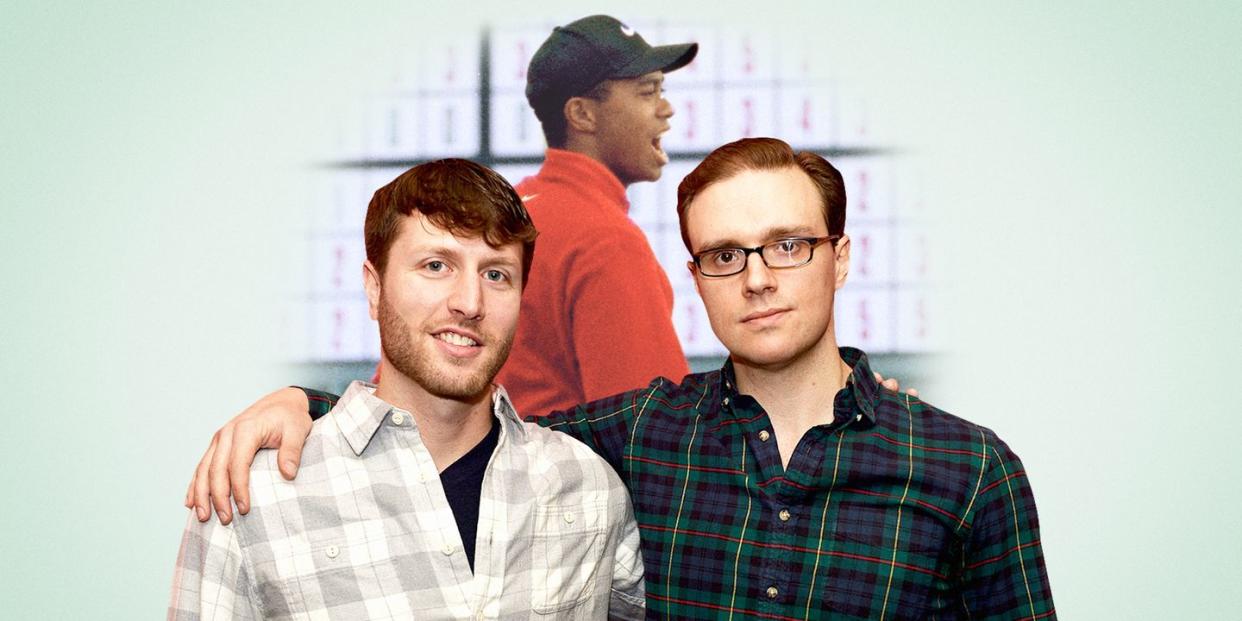
- Oops!Something went wrong.Please try again later.
Out of anything you'll see in Tiger, HBO's two-part documentary about golf legend Tiger Woods, the images that'll surprise you most won't be the ones you're familiar with. Not the car crash. Not the mugshot. Nothing from 20 years of Nike commercials. Instead, Tiger's most revealing moments come from a dusty, old VHS tape Woods's first girlfriend, Dina Carvell, gave to Tiger's directors, Matthew Hamachek and Matthew Heineman.
"I remember sitting in the edit room when we popped that in," remembers Hamachek. "My first thought was, No one has ever seen this side of Tiger Woods."
This mysterious, previously-unknown side of Tiger Woods? It's the guy as a teenager—before rising, falling, and rising again—playing the air saxophone in a cramped living room, surrounded by a group of friends cheering him on. In other words: the side of Tiger Woods he had to put away in order to become Tiger Woods. The fun-loving, innocent, carefree kid from sunny California. Showing Woods during the rare moments the American public didn't see him is part of what makes Tiger so special. It's thanks to Heineman and Hamachek, who saw an untold story in detailing the way American media tore him down after his sex scandals in the late '00s—and how eager they were to lift him back up when he won the Masters in 2019.
Over the course of its two parts, the last of which debuts on HBO Sunday night, Tiger also explores Woods's complicated relationship with his father, Earl, and the people the golfer suddenly (and often, without explanation) dropped from his life. Before the release of Part Two of Tiger, we Zoomed with Heineman and Hamachek to ask how they were able to profile Tiger Woods without his involvement—or approval.
ESQUIRE: Some of the best moments of the documentary come when you show the home videos that Tiger's first girlfriend gave you. What did you see in those videos?
MATTHEW HAMACHEK: One of the greatest challenges in making this film was finding the right people to talk to. One of the people that we zeroed in on was Dina Gravell, who's his first love. She hadn't really told the story all that much and was very reticent to talk about it.... we were able to finally have a conversation with her and say, "This is the type of film that we want to make, and this is why your part of the Tiger Woods story is so important to our film." Eventually, she agreed after three more months of conversations after that. When she did, she sent us a couple of VHS [tapes] that she had. I remember sitting in the edit room when we popped that in, and my first thought was, No one has ever seen this side of Tiger Woods. Because the Tiger that everybody sees on television is the cold-blooded assassin. So, this is a guy who's laughing and dancing, and it was a totally different side to him. One of the things that [Gravell] did so well in telling her story is that she talks about how that side of Tiger is something she really hasn't seen since. How much she misses it, and how much she really wanted him to have a life outside of golf. And she could see that that was being taken away from him.
ESQ: It's incredible that you had multiple people who said that when he exited their lives, it felt like he had died. Obviously, this documentary isn't something like The Last Dance where you have everybody involved reflecting years later, after the moment has passed. Since you are documenting someone who's still chasing majors, why make this during this moment in his life?
MATTHEW HEINEMAN: My background is generally in making vérité films—this is the first "talking head" film I've ever made, so it was a really interesting challenge. Matt and I had worked together on my previous films as well, trying to bring that same mediacy that a vérité doc has into this new format. That plays into the question, "Why now?" I think the "why now" is really, yes, Tiger is still out there playing and Tiger is still out there, but I think when we started we didn't know he was going to win the majors. We didn't know that this is going to be a rise-fall-rise story. But, in our opinion, there hadn't really been a deep dive into this man at this point, and so we felt like it was as good a time as ever to try to do that.
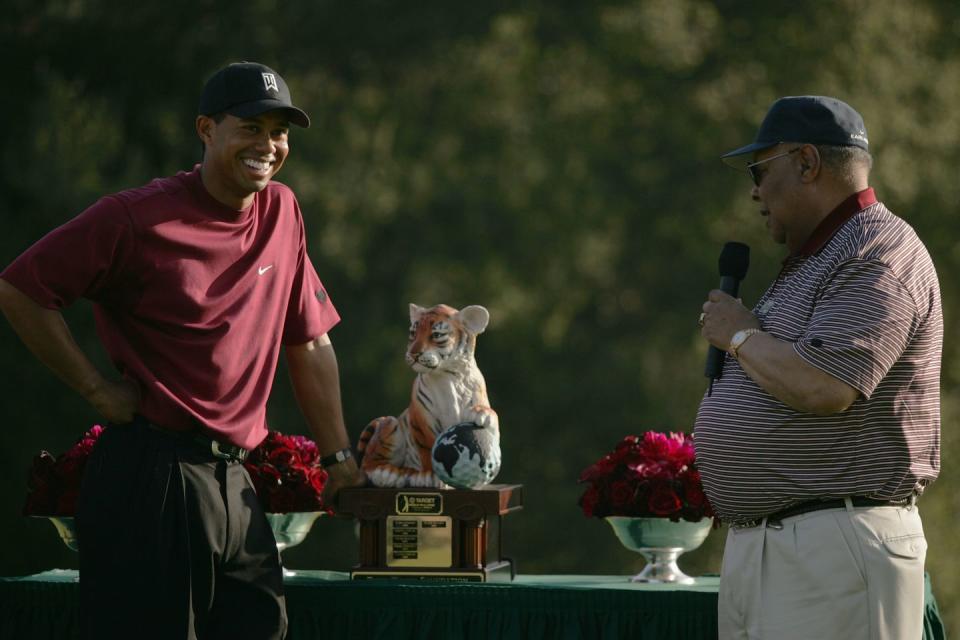
ESQ: The throughline of Part One is fatherhood—and how you get into the relationship between Earl and Tiger. I feel like some people didn't know that he envisioned his son being this messiah and uniter of society. Do you think Tiger could have been that person had he wanted to be?
HAMACHEK: Earl was one of the first people who saw Tiger as something more than just a golfer, and talked openly about it. The movie starts at the 1996 Haskins Collegiate Award Banquet, and that's where Earl is talking about how Tiger is going to transcend the game. One of the writers talks about it, who met Earl. He says Earl thought that Tiger was going to unite all the races and tribes of humanity. Part One is largely about all these people placing different identities onto Tiger, right? His father started it, then Nike ran with it, and then the media and the public took over. I think Part Two is a lot about Tiger trying to find an identity of his own and live his own life after Earl, who was his compass, had passed away... I don't think there's been a figure in American life, at least recently, where that much has been placed on somebody who didn't necessarily ask for it. That's a lot to live up to.
ESQ: When you look at both parts of the documentary, the people you talk to come up with different answers to the question of why everyone was so ready to pile on him after he slipped up. Celebrity, race, "America being America," as someone says. What do you think it was, after all your work on the film?
HEINEMAN: I think Pete McDaniels talks about this quite eloquently in the show. It's all these journalists especially, who've been covering Tiger for so long, who've been part of the mythos that Earl had created for his son and that the media was buying. They were as ready to build them up as they were to take him down. I think that's just inherently human. And I think that's also how journalists are wired—you need an angle, you need a story. And so, the story of this guy rising, rising, rising, and becoming this almost mythical character. And then, Wow, he's actually not what we thought he was. Okay. We can write this story, and we can tear him down. I mean, the DNA was there for it all to be written that way. I don't think that was overly surprising. And then similarly, when he was able to crawl back out of it and start winning again, that was sort of the picture-perfect story for people to tell.
HAMACHEK: And when that happened, everybody started to write about how it was a redemption story… I don't exactly know how winning a golf tournament is redemption. And I don't know that journalists and the public are really the people that should decide whether or not he needed to be, or has redeemed himself. But again, it felt like the cycle was starting to happen all over again.
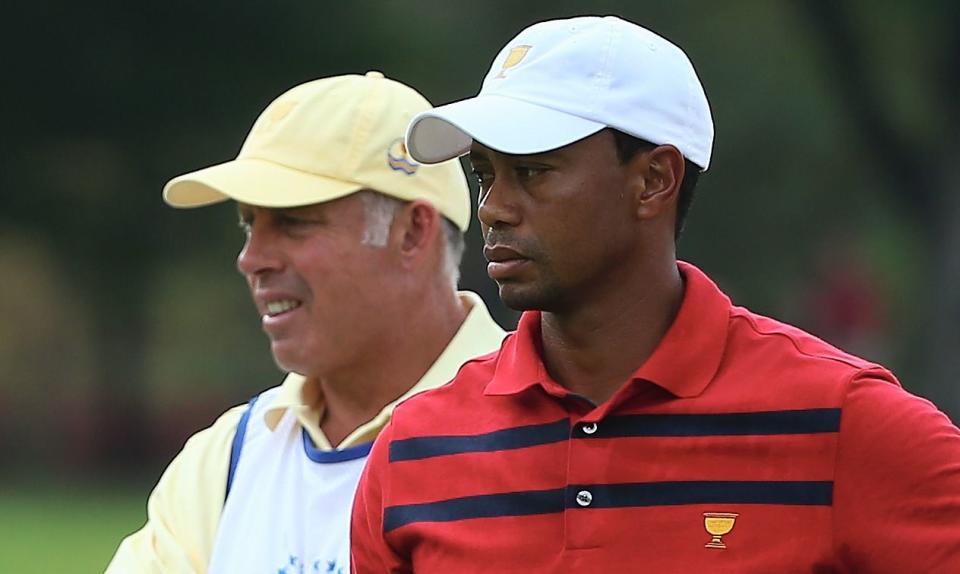
ESQ: In Part Two, you focus on the people Tiger left behind. What did you learn from that specific corner of Tiger's orbit, the people who were left behind and never called back?
HEINEMAN: I think that was one of the most surprising things for Matt and I—the amount of people that Tiger had cut out of his life and really never, ever looked back. And then, in getting to know them for our film, how much these people still loved him and cared for him. And again, almost had this sort of maternal, paternal protection over him. I think that was extremely surprising, how almost deferential and dedicated they were to his legacy. And yes, they weren't talking to him on a daily basis like they used to, or the relationship wasn't the same, but, in agreeing to do the interviews and us gaining their trust, were adamant that this wasn't a takedown on Tiger. That's something that we never intended it to be or wanted it to be.
ESQ: I mean, Dina says she wanted to crawl through the phone and just give him a hug. So many people say something to that effect—that even after everything, they still want to protect the side of him that they experienced one-on-one like that.
HAMACHEK: When you look at Rachel [Uchitel], I think one of the most fascinating parts of her interview is how she talks about when Tiger and her would get together, basically, he would call it “plugging in.” Basically: he would lay in the bed next to her and almost just fall asleep because he was comforted by her presence. When he would wake up, he would watch cartoons and eat cereal. Obviously, I think this is a guy who, as we've talked about, has had a really tough time with the public and the media, even people that are close to him, putting all of this pressure on him to be something. Rachel talks about that. She said that she can remember him saying, "I'm afraid that I'm not going to live up to what everybody wants Tiger Woods to be." I think that was a huge part of his life.
ESQ: The idea that he might have genuinely fallen in love with so many different individuals—and that each relationship was actually special—got to the complexity of what I feel like you’re going for.
HAMACHEK: That was Tiffany Masters, who's a VIP host in Las Vegas. I think she said that Tiger really wanted relationships out of all of these women. That was a fascinating part of this, because I think the way that the public and, I'm sure, most of us understood the story, was that that wasn't the case. So he was clearly seeking something out.
HEINEMAN: He never grew up. He never had what we all had. He never went to parties as a teenager, messed up, got in trouble, and got drunk. So, some of these things were manifestations of making the mistakes that people often make earlier in their life. I think one of the things that Matt and I really didn't want to do is paint the whole story, but especially this part of the story, with one simple brush stroke. There's many, many reasons why all those things happened, and I think our goal is that everyone can walk away from the show debating, or coming away with their own version of who they think Tiger is. Because we're all complex organisms meandering through this world, and surely Tiger is as well.
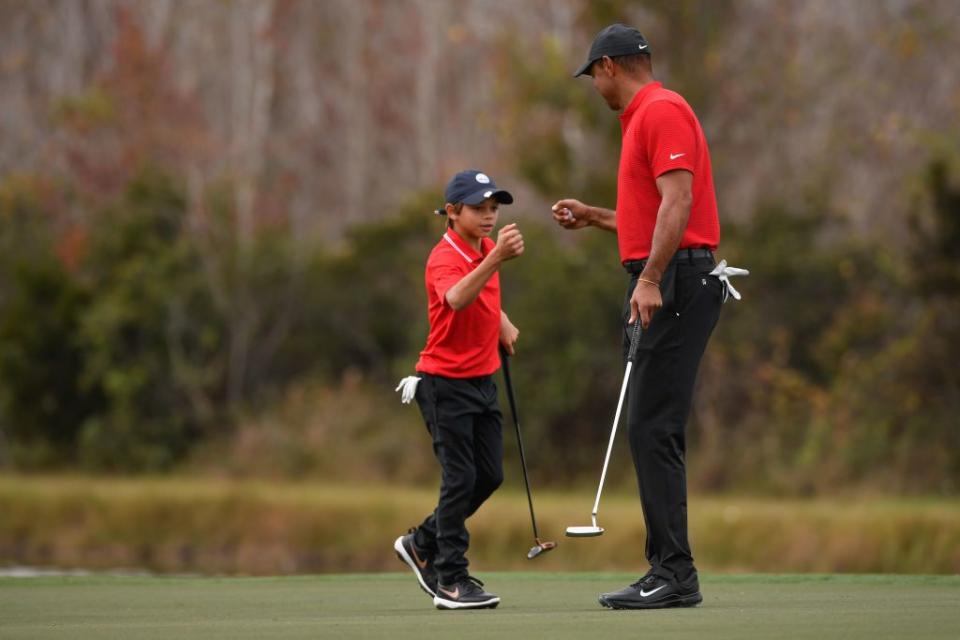
ESQ: Your interviews are so wide-ranging, too—you even have his kindergarten teacher. Was that partially a product of not having the involvement of Tiger, Elin, and Kultida Woods?
HAMACHEK: When we reached out to Tiger and his people said that he had a previous agreement with another media company [and] he wasn't going to be able to participate, there were two things we wanted to do. The first is to find people that knew him intimately. The second was, we wanted to make sure Tiger had a voice in all of this and that he had the opportunity through [archival footage] to tell his story as well. A lot of the process was combing through hundreds and hundreds of hours of Tiger's interviews, so that at pivotal points, whether it was the ’97 Masters or when he was being interviewed as a high school student, he was able to tell his story, despite the contractual obligation he had. Then, beyond that, it was: What are the pivotal moments in his life and who were the people that were there that really got to know Tiger?”
ESQ: You talked about going through all those interviews, and it seems like you often isolated and found moments when he felt gravely misunderstood or uncomfortable.
HEINEMAN: I think finding those moments that you seek when you're shooting a vérité film in real time, of vulnerability or... How many hours did we have all together that we combed through, Matt?
HAMACHEK: I would imagine, including all the golf, we're talking 6, 7,000 hours. I mean, it's just endless because of the golf, but just... There's so many interviews with him over the years, because his father put him on TV when he was two years old. Ever since then his entire life has been documented.
HEINEMAN: Yeah. So I mean, finding amidst all that those moments of, in his eyes, in his face, in his body language, that you seek when you're shooting a film in real time, in archival [footage], that was so important for us. And Matt and our other editors did an incredible job in seeking those moments out.
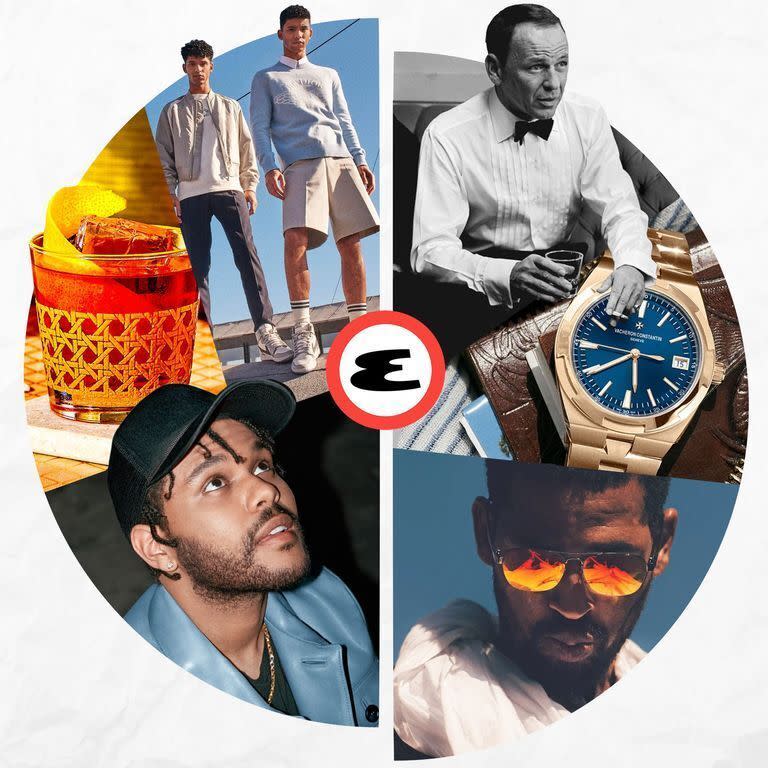
Get Unlimited Access to Esquire
ESQ: You also spliced the DUI video as if it's not a talking-head documentary. And you had multiple people extract meaning from that moment. What did you make of what people said—that it was almost emblematic of him being in front of a screen his whole life?
HAMACHEK: So I think Michael Bamberger spoke about how, whenever a camera is pointed at you, there's a bit of artifice, that it's not entirely true. Tiger has lived that way his entire life. And what I think Bamberger found so fascinating about that moment in 2017 was that it wasn't orchestrated, or produced by his team or Nike, or somebody else. That it was in some ways the most truthful moment that Tiger has had in front of the camera. That's something that fascinated a lot of the people we talked about.
ESQ: With all the lengths your film goes to to talk about fatherhood, what did it mean for you guys to see Tiger out there with his son, Charlie, a couple of weeks ago, having a great time?
HEINEMAN: It's really interesting to see whatever lessons that Tiger learned from Earl—it seems like he's approaching fatherhood in perhaps a different way than Earl did. Allowing Charlie to pursue other interests, to do other things. It was quite emotional to see them out there together, playing, as it was to see Tiger win the Masters and Charlie give him the hug that mirrored the hug that Earl gave to him.
HAMACHEK: And that weekend when all that was going on, somebody asked Tiger, "What is your plan? How are you going to handle Charlie's golf?" Tiger said, "I just want him to enjoy it."
You Might Also Like

